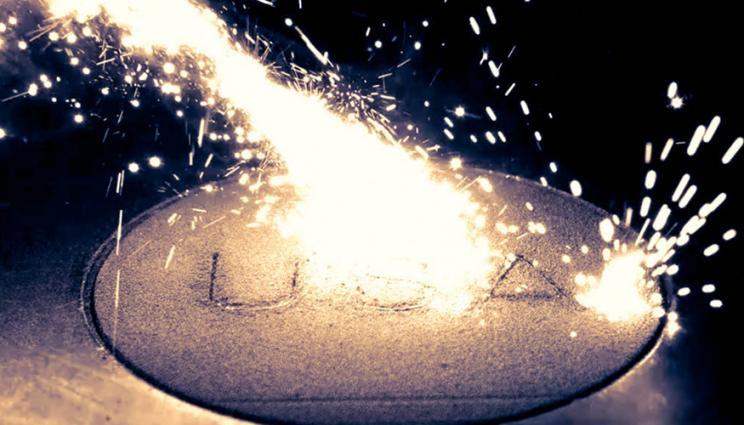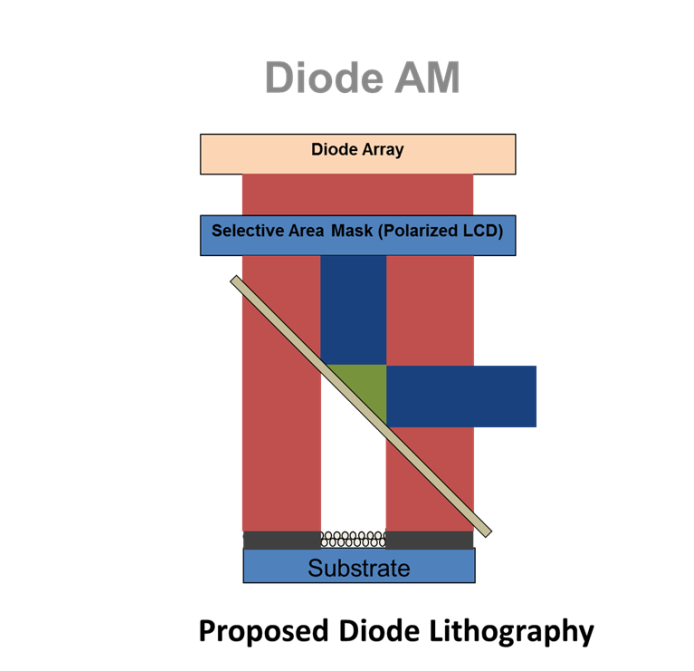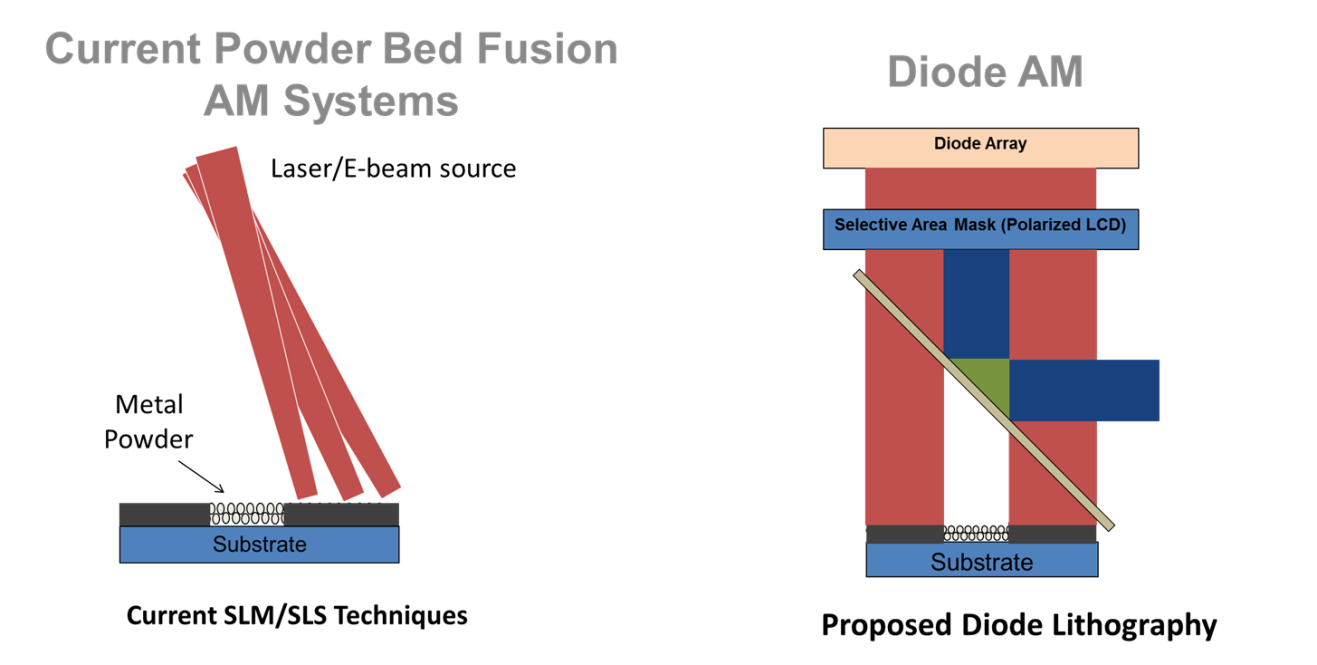Metal additive manufacturing (AM) is growing at a fast-paced spurring the world’s current economy. According to the Wohler’s Report metal AM grew nearly 76% from 2012 to 2013. Much of this growth is due to the advancement of metal AM from prototyping applications to part production in aerospace, energy and medical industries. Powder bed fusion is the current market leader in metal additive manufacturing. In this AM technique a high power continuous fiber laser is used to melt layers of powdered metal by scanning the laser over a powder bed, melting the powder and bonding it to a 2D substrate. The use of a continuous fiber laser makes the instrumentation expensive and the scanning requirement, and associated controls of laser spot size, power and velocity, makes the build process very time consuming. Continued growth will require penetration of new markets with new metal AM techniques that address cost and speed of production.
LLNL scientists have developed a new metal additive manufacturing technique that uses diode lasers in conjunction with a programmable mask to generate 2D patterns of energy at the powder surface. The method can produce entire layers in a single laser shot, rather than producing layers spot by spot as is currently done in powder bed fusion methods.
Cost reduction is achieved. Diode lasers cost typically 20 times less than currently used fiber lasers (on a $/W basis).
Scalability is enhanced. Entire layers are produced at one time by using diodes and patterned masks.
Accelerate the production rate of additive manufacturing, especially those of metal systems where the energy input required is highest.
Proof of concept has been achieved at a laboratory scale. Patent protection for a portfolio of intellectual property is being pursued. Published patent application 2014/0252687




